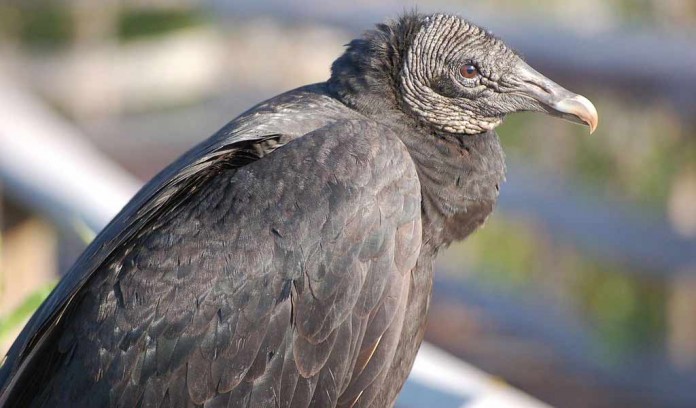
By Jeff Pelc and Dionne Orr
Black vultures continue to threaten cattle producers throughout Ohio.
Black vulture range and population numbers have expanded in the last 30 years resulting in increased property damage, livestock and pet depredation and aircraft collisions.
Vulture attacks
In Ohio, the number one request to U.S. Department of Agriculture’s Wildlife Services for help with black vultures is for livestock depredation. These requests have doubled in the past three years.
With the spring calving season approaching, the Ohio Cattlemen’s Association and USDA’s Wildlife Services want every producer to be prepared.
Smaller and more aggressive than turkey vultures, black vultures have been witnessed attacking newborn calves. Vultures will strike during the birth process, or shortly after birth, by attacking the eyes, nose, and other soft tissue of newborn calves.
Related article: Black vultures on Ohio farms.
In some cases, the adult cow is also injured during these assaults, sometimes causing death.
Jeff Pelc, a district supervisor with USDA’s Wildlife Services out of Groveport, provides some useful tips and strategies to reduce the potential for calf losses.
Tips for reducing calf loss
Harassment and husbandry practices can prevent damages before they occur and should be implemented as soon as vultures are observed on your property.
The goal is to discourage the birds until they decide to move to another area.
Many wildlife live where they find shelter, food and water, so these recommendations are designed to make your property no longer attractive to the vultures.
Harassment. Visual and sound harassment are the primary means of dispersing vultures.
Noise harassment can include propane exploders or pyrotechnics, sound-and-light projectiles similar to firecrackers.
Lasers. To move vultures from a night-time roost, shining a low-powered red or green laser towards the birds, approximately 30 minutes before and after sunset, can discourage their presence.
Lasers, safe and quiet, can be effective over distances of several hundred yards.
Effigy. A vulture effigy, or likeness, suspended near cattle could disrupt daily vulture activity and persuade vultures to leave the area.
Effigies may be a carcass, a taxidermist preserved mount or replica.
Carcass removal. Immediate removal of carcasses and/or afterbirth will reduce the attraction to an area. These materials should be deeply buried or composted.
Grazing. Implement rotational grazing, move cattle closer to human activity, or use guard animals.
Indemnity payment
If you continue to experience losses or damages after using harassment and husbandry practices, two programs can assist you.
The 2014 farm bill offers a Livestock Indemnity Program to compensate producers for loss due to avian predators. For a fact sheet with details, search “LIP factsheet 2016 at www.fsa.usda.gov.
Talk with your local Farm Service Agency office for more details and to enroll in that program.
Depredation permit
After non-lethal and husbandry practices have been implemented, if your livestock is still threatened by vultures, lethal removal of a few black vultures may be necessary to further encourage the flock to leave the area.
Although a threat and sometimes a nuisance, these scavenging raptors fill an important place in the environment.
Black vultures are protected under the Migratory Bird Treaty Act. Lethal take without a permit issued by the U.S. Fish and Wildlife Service (USFWS) is punishable by fines and/or jail time.
A Migratory Bird Depredation Permit from the USFWS is available and does not require active damage or livestock loss prior to applying.
If you have experienced black vulture damage in the past, or if impending black vultures threaten your livestock, you may apply for a permit to have on hand, ready to use.
The Ohio Division of Wildlife will pay the $100 permit fee for your first permit. The time from application to issuance is minimal and permits can be used for one year.
Black vultures, like all wildlife, have value. They play an important role in the ecosystem, feeding on carrion and reducing disease.
Call the Ohio WS state office at 1-866-487-3297 for more information on minimizing and mitigating damage caused by black vultures.
For the Wildlife Services fact sheet on vulture damage, search “vulture fact sheet” at www.aphis.usda.gov/wildlife-damage.
(Jeff Pelc is the USDA Wildlife Services Ohio district supervisor and Dionne Orr is a USDA Wildlife Services staff officer and wildlife biologist)













